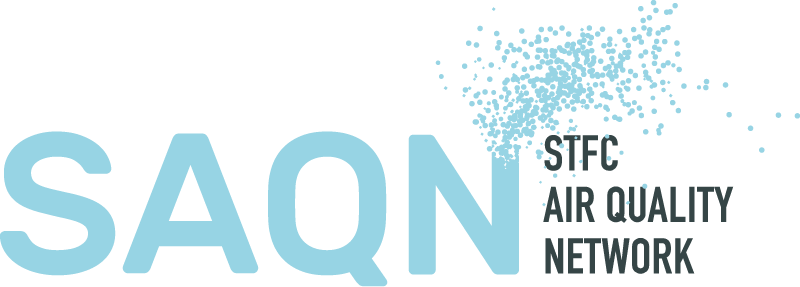The Network has now concluded, but we are keen to maintain the connections made over its duration, as well as to promote new ones. Should you have an interest in how the STFC Facilities can support your research, please get in contact with us.
Air pollution is a major, global issue classified in 2014 by the United Nations Environment Programme as the ‘world’s worst environmental health risk’. Costs to the UK from deaths attributable to air pollution are estimated at £20 billion per year but this is only part of the overall impact. Additional costs to the UK economy and society as a result of air pollution are associated with: increased morbidity creating pressure on the health service, reducing productivity and impacting quality of life; impacts on the natural environment including loss of biodiversity and reducing crop yields; and damage to built environments. There are therefore huge opportunities to deliver economic and societal impact from improving air quality.
The aim of the STFC Air Quality Network (SAQN) is to create a multidisciplinary community of experts, researchers, policy makers and businesses that can leverage Science and Technology Facilities Council (STFC) research, capabilities and facilities to address air quality challenges. The SAQN will facilitate the exploitation of the currently untapped potential of STFC capabilities to enhance and progress research into air pollution, particularly with relevance to impacts on human health and the environment. This will be achieved via the following objectives:
- Building a broad multidisciplinary network of STFC scientists and air pollution stakeholders including those from the public and private sector as well as academia and research institutes.
- Promoting the engagement of researchers with both industry and regulators/governments to drive mutual understanding and enable air pollution solutions development.
- Increasing awareness of STFC facilities and capabilities within the air pollution community.
- Initiating lasting collaborations to leverage funding for cutting-edge air pollution research.
- Providing a forum to share information to ensure that researchers across the UK are aware of each other’s activities, building links and ensuring maximum benefit from investments.
The work of the SAQN cuts across all parts of the air quality system, including indoor and outdoor air pollution; activities that contribute to improving any aspect of that complex landscape with the involvement of STFC science, facilities or expertise can be supported. To aid communication of the concept, areas of interest have been grouped under air quality themes and STFC capabilities, but these should not be seen to limit the scope of activities that are relevant to the network.
Theme 1: Monitoring Air Pollution Emissions and Concentrations.
Theme 2: Air Pollution Modelling, Forecasting and Scenario Testing.
Theme 3: Impacts on Health and the Environment.
Theme 4: Developing and Evaluating Solutions and Innovation.
Areas of STFC expertise have been identified that can fill capability gaps, and enable key research questions to be addressed within and between the air pollution themes:
STFC Capability 1: Analysing and integrating large and complex data.
STFC Capability 2: Earth observations and remote sensing.
STFC Capability 3: Access to and experience of using STFC facilities.
STFC Capability 4: Development and application of technology.
Further information on specific STFC capabilities can be found in the presentations from our launch meeting.
Initially the SAQN is focused on raising awareness of the strengths of the STFC community to enable others to take advantage of these world-leading facilities and expertise. The SAQN runs meetings and fora to build a community that
cuts across traditional disciplinary boundaries, and sandpits to develop research proposals for small scoping studies. We fund travel for researchers to work in other universities, businesses or government to build collaborations for future funding.
We also fund proof of concept studies to demonstrate the potential of new ideas. These activities will be used to build the necessary links, and to demonstrate the value and feasibility of new ideas to enable the development of larger projects and collaborations suitable for submission for future funding from UKRI or other funding sources.
Over the next few years there are likely to be major investments in air quality research and increased pressure on polluting industries to deliver reductions in emissions to air. The SAQN and the associated opportunities will enable its members to build the multidisciplinary collaborations necessary to propose genuinely integrated, challenge led research with pathways for real impact on industry, policy, society and the economy.

